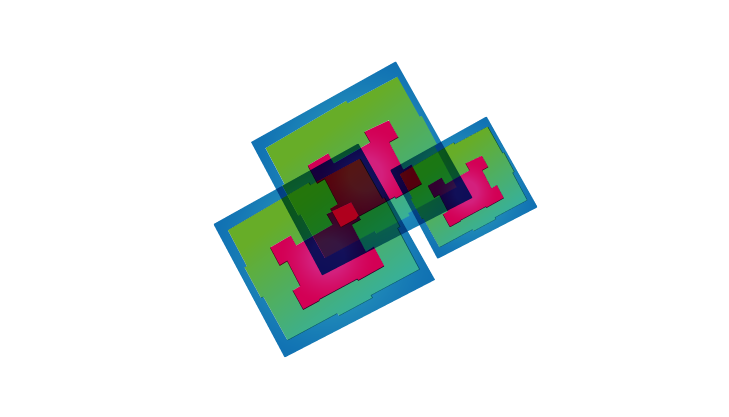MAB20’s academic track includes four Paper Sessions, where the selected full papers and Late-Breaking Works (LBW) will be presented via Zoom. Each session will feature six 5-minute presentations followed by a discussion. This session will be moderated by Dr Alexander Wiethoff, Senior Lecturer at LMU Munich. See below the selected papers to be presented in this session:
Designing and Building CommunIT
Carlos Henrique Araujo de Aguiar (Cornell University), Keith Green (Cornell University), Trevor Pinch (Cornell University), Gilly Leshed (Cornell University), Kevin Guo (Cornell University) and Yeolim Jo (Cornell University).
Abstract
Despite the promise of Information Technology (IT) to build community, the emergence of (especially) social media has played a factor in reducing the importance of public spaces as loci for civic discourse and for addressing community challenges. In response, we designed communIT, a roomsized, cyber-physical platform installed in underused public spaces. The full-scale prototype, currently under construction, is a foldable, large-scale kirigami, with embedded lighting, audio, displays, and other peripherals, that changes its physical form, lighting, and audio output to match the needs of community groups as they co-create media and exhibit these publicly. We report on the design iterations of communIT through design studios, user studies, co-design activities, and to-scale and full-scale prototyping communIT offers a design exemplar of a largescale, cyber-physical artifact that support groups in shaping their identities, practices, and roles in the larger community.
Ubiquitous Memory: A Field Study on Ubiquitous Technology Systems and Interaction Design for the Symbolic Appropriation of Spaces Through Collective Memory
Pablo Sotres Castrejon (Universidad Autónoma Metropolitana), Carlos Guerrero Millan (Universidad Autónoma Metropolitana), Cristina Rivas Herrera (Universidad Autónoma Metropolitana), Nora Morales Zaragoza (Universidad Autónoma Metropolitana) and Santiago Negrete Yankelevich (Universidad Autónoma Metropolitana).
Abstract
This paper presents the results of a case study on how ubiquitous technology can trigger symbolic appropriation dynamics, or placemaking from a community, in the context of building abandonment in the historic downtown. We focus our approach on the creation of an interdisciplinary methodology between communication strategies, information design and interaction systems which converged in the generation of a public interactive display which can mediate sensorial and symbolically appreciations for different audiences through play and interaction. We focus our approach on the creation of an interdisciplinary methodology including communication strategies, information design and interaction systems which converged in the generation of a public interactive display which can mediate sensorial and symbolical appreciations for different audiences through the use of play and interaction.
Public Gratification Palace: A Framework for Increased Civic Engagement
Jennifer Jiang (Technische Universität Berlin, Institute of Architecture, Chair of Bio-inspired Architecture and Sensoric), Lawson Spencer (Cornell University, Cornell Architecture, Art and Planning) and Liss C. Werner (Technische Universität Berlin, Institute of Architecture, Chair of Bio-inspired Architecture and Sensoric).
Abstract
As popularly mentioned the successful practice of urban design and planning is limited when only designers and local business or governmental institutions participate in the design and implementation of public infrastructure placemaking and policy development. Public design cannot be a one-time event nor permanently static because community engagement ought to be a recurrent and consistent activity in fostering the growth and sustainability of the community. Since the 1960s there have been initiatives to democratize urban planning practices and more recently these initiatives have continued in this modality of citizen designer and empowerment through the implementation of media architecture spatial blogging and co-creation through crowdsourcing. As a conceptual framework the Public Gratification Palacesuggests a co-creative design methodology to increase civic engagement using the familiarity and intuitiveness of mobile device usage and social media platforms thus supporting voices of the digital literate community. Through cybernetic principles this framework utilizes gratification methods akin to the ones used in social media to enhance user experience and continued participation. Geo-located instant gratification as the process of attaching geographical metadata to digital media will provide all stakeholders (e.g., local public, spatial planners and designers, and city governments) with feedback crowd approval/disapproval and/or proposals for the design and implementation of public infrastructure as well as policies. Consequently, location-based social interactions and information exchange will increase in-situ civic engagement and community building through the networks of geo-tagging.
Distancing Interface: Improvisational media architectures for place-based discourse under lockdown
Dietmar Offenhuber (Northeastern University) and Sam Auinger (independent).
Abstract
The paper presents the case study of BERLIN_LOKAL_ZEIT, a collaborative archive and exhibition project aiming to document and reflect individual experiences of the COVID-19 lockdowns in Berlin, Germany. What began as an observational effort in spring 2020 became a year-long archive, exhibition, and broadcasting platform that generated various hyper-local interfaces. The paper articulates an improvisational approach to media architecture in the form of self-reflection by the project initiators. Necessitated by the limitations imposed by the lockdowns on cultural production and public discourse, the paper presents an alternative conceptual approach to media architecture that is not based on a fully-specified technological infrastructure for discourse and interaction but instead on improvisational practices that manifest themselves in different technical interfaces. This improvisational approach is not merely a mode of production, but raises questions of about the discourse of media architecture and its underlying assumptions of methodological rigor. In traditional HCI, systems and artifacts are often presented as stable and fully specified, while their users are considered interchangeable. In contrast, we consider urban media interfaces as improvisation-driven infrastructures (or improstructures) in which the actors and their relationships are stable, while the technologies they create are provisional and in flux. As a consequence, the defining property of media architecture is no longer the structural integration of media into architecture but the embodiment of mediated communication in objects and performances at concrete places. In an environment where many physical spaces are longer accessible and human contact among strangers diminished, the project explores the restorative function and capacities of media architecture for shared reflection and discourse in physical public space.
Media Architecture As Privatization
Zach Melzer (Media Arcitecture Institute)
Abstract
This essay focuses on the communicative values of spatial design in media architecture analyses, and contextualizes Yonge-Dundas Square in Toronto within a history of privatization. Instead of architectural novelty, this essay argues, we must focus on the specific organizations that manage, maintain, and curate the spaces and activities where media architecture take place.
Mediascapes in China: The Empire of Figures Transforms into Connected Media Facades
Thomas Schielke (ERCO arclighting), Lin Ma (Fujian Feixiang Lighting Design)
Abstract
Multiple connected buildings with one common animation have emerged as a new type of media facade design. This development is especially visible in China, where some of these light shows were launched in connection with important national and international political events. Though many studies analyzed single media facades, the research of large groups of media facades is rare. Therefore, this paper introduces this development in the context of cultural tradition and urban design inChina and discusses the meanings with regard to delivering identity, political communication, branding for tourism, night-time economy and sustainability. The findings suggest that the local building tradition, urban design history as well as the local political system are essential factors for the significant rise of connected media facades in metropolises in China. The results lead to the conclusion that the Chinese government has the authority to control the urban night-time design by using light shows to enhance local as well as national identity and present technology leadership. Further on, the urban light shows are a medium to stimulate the night-time economy. Sustainability and investment costs are critical factors regarding the acceptance of large-scale media facades.

